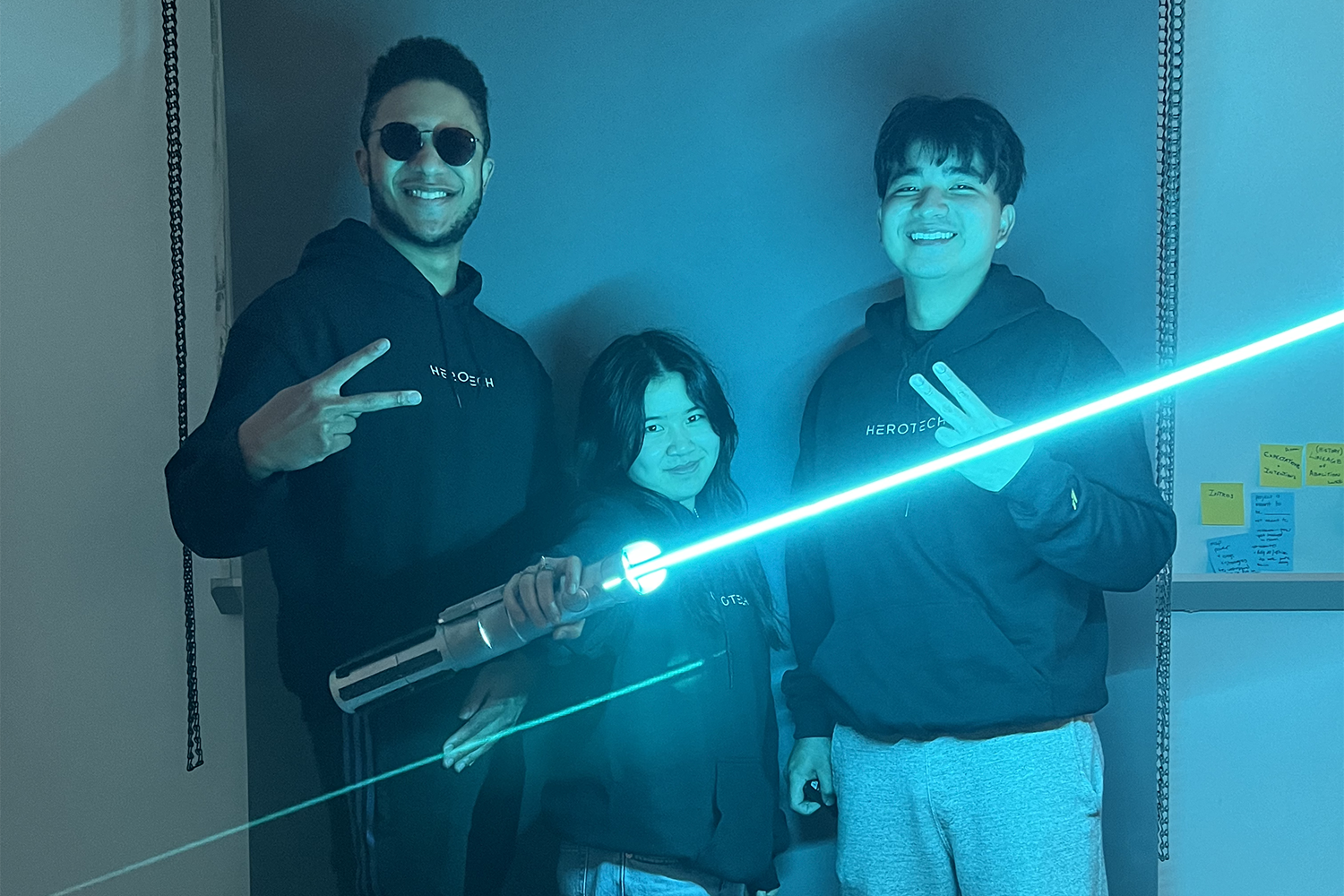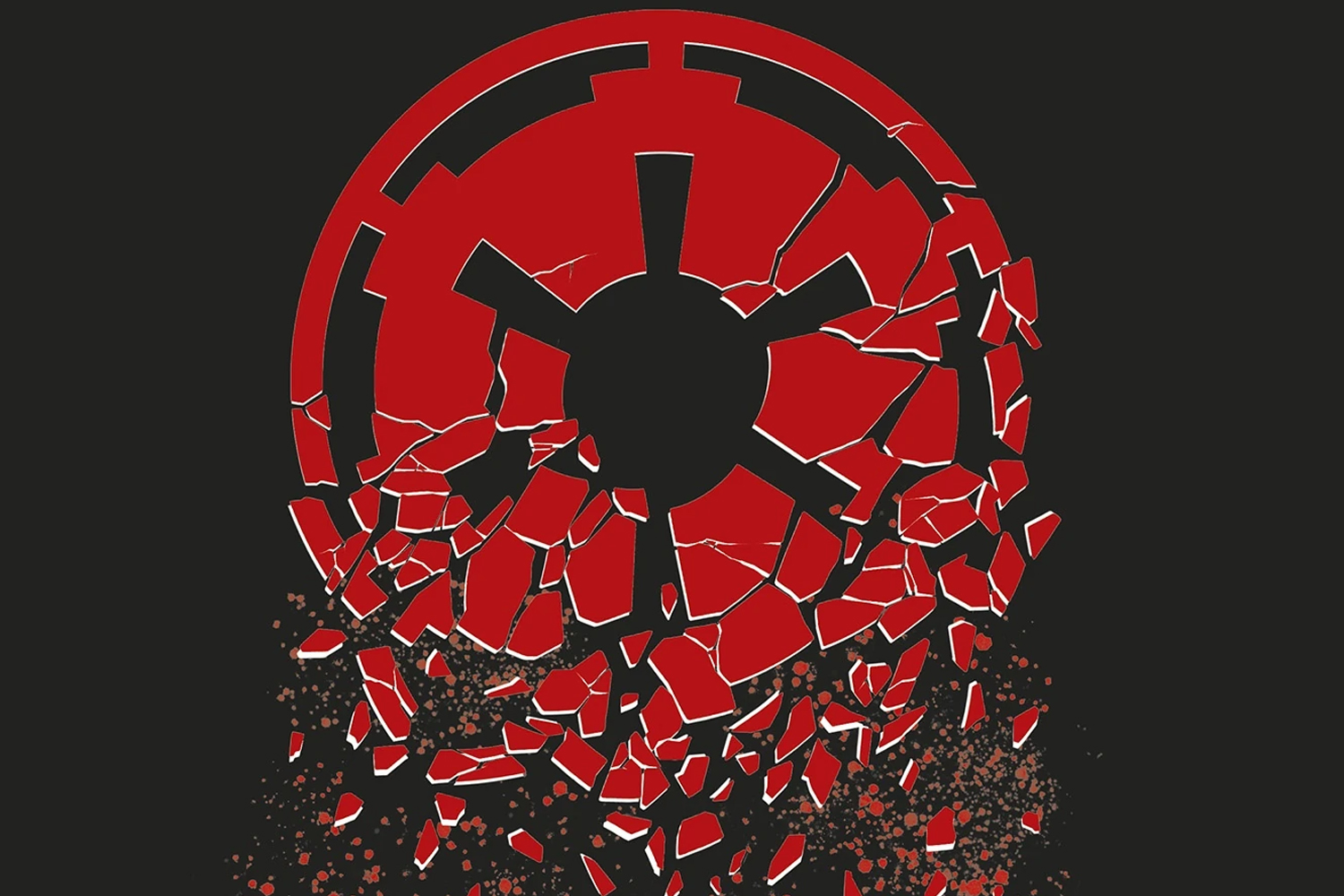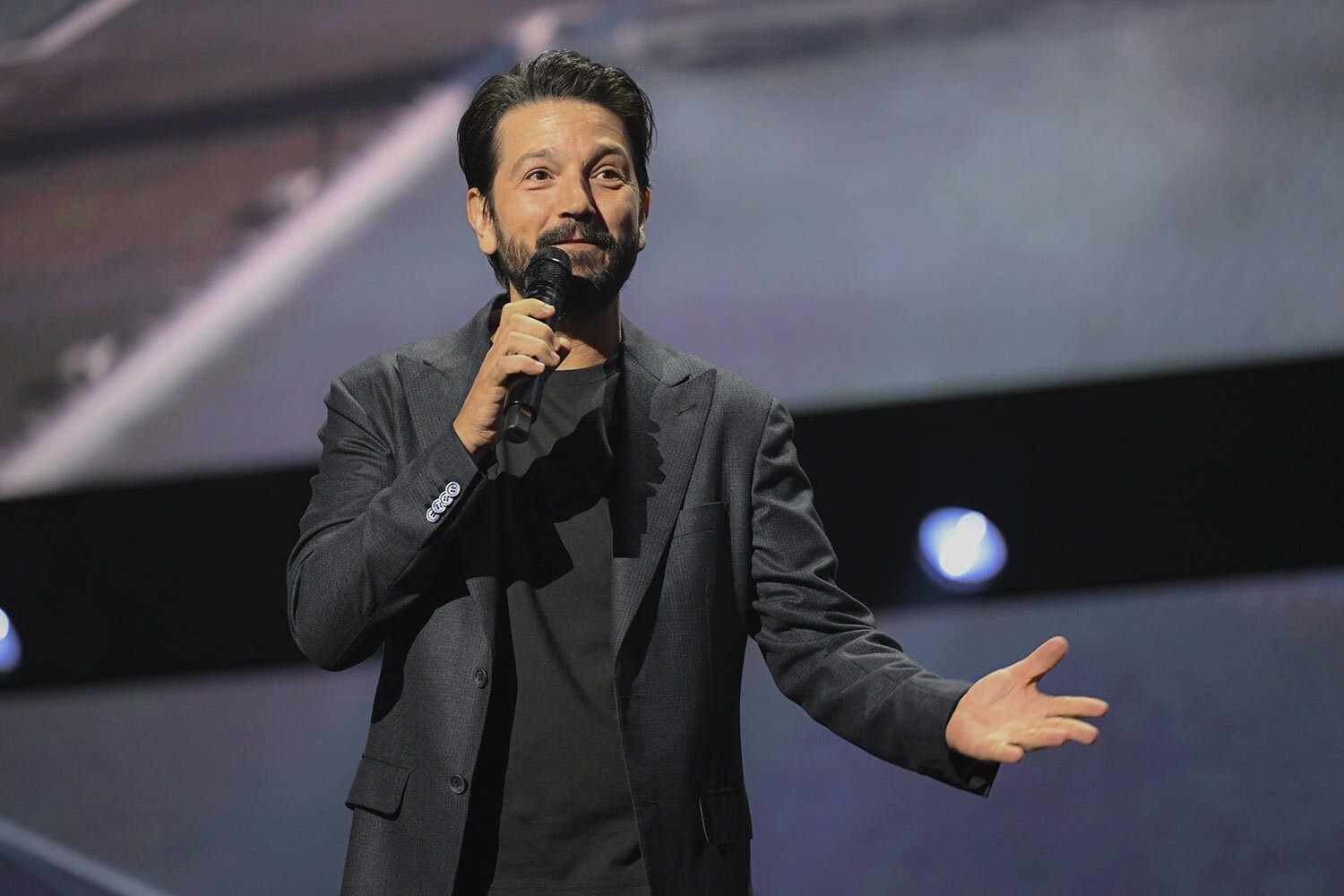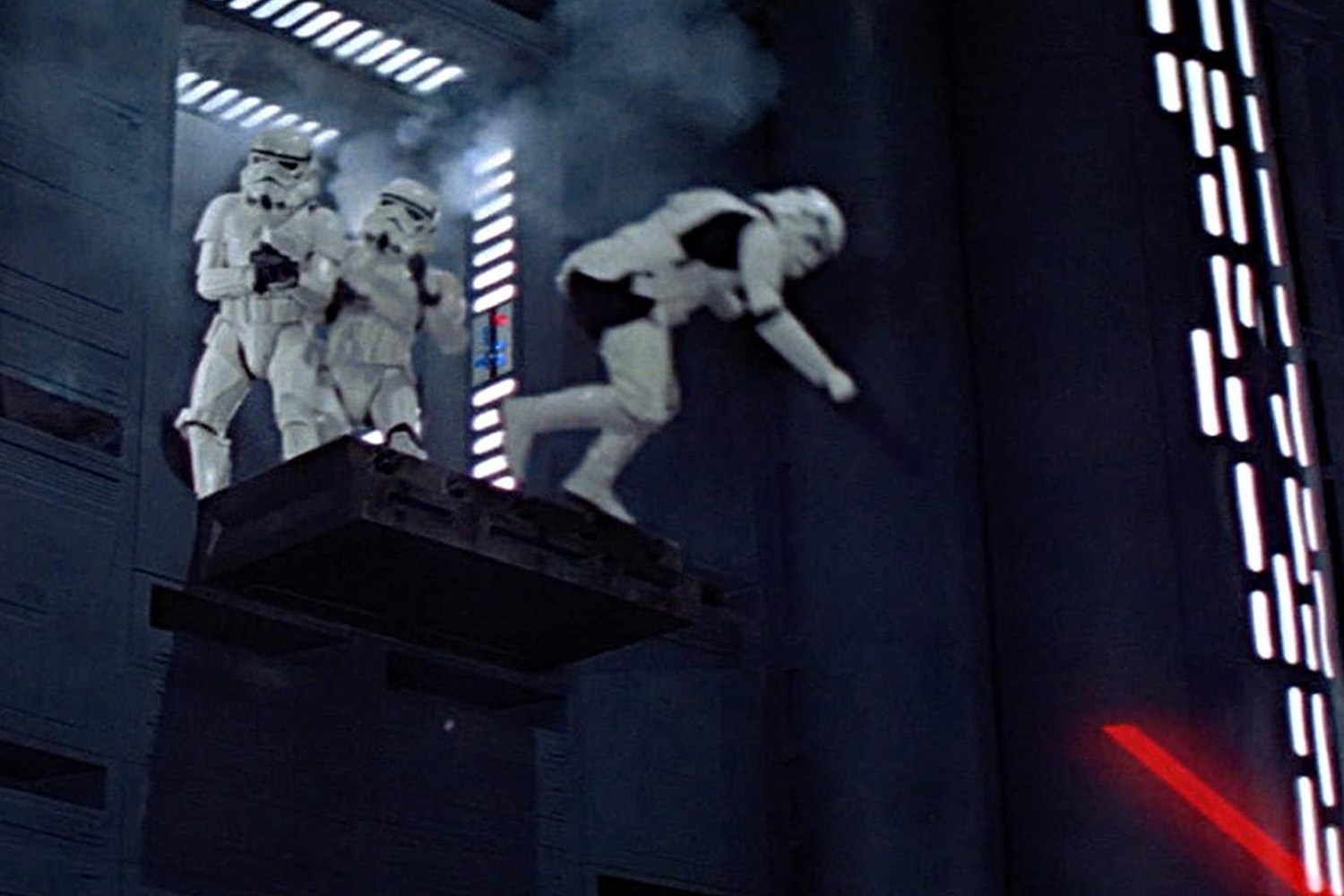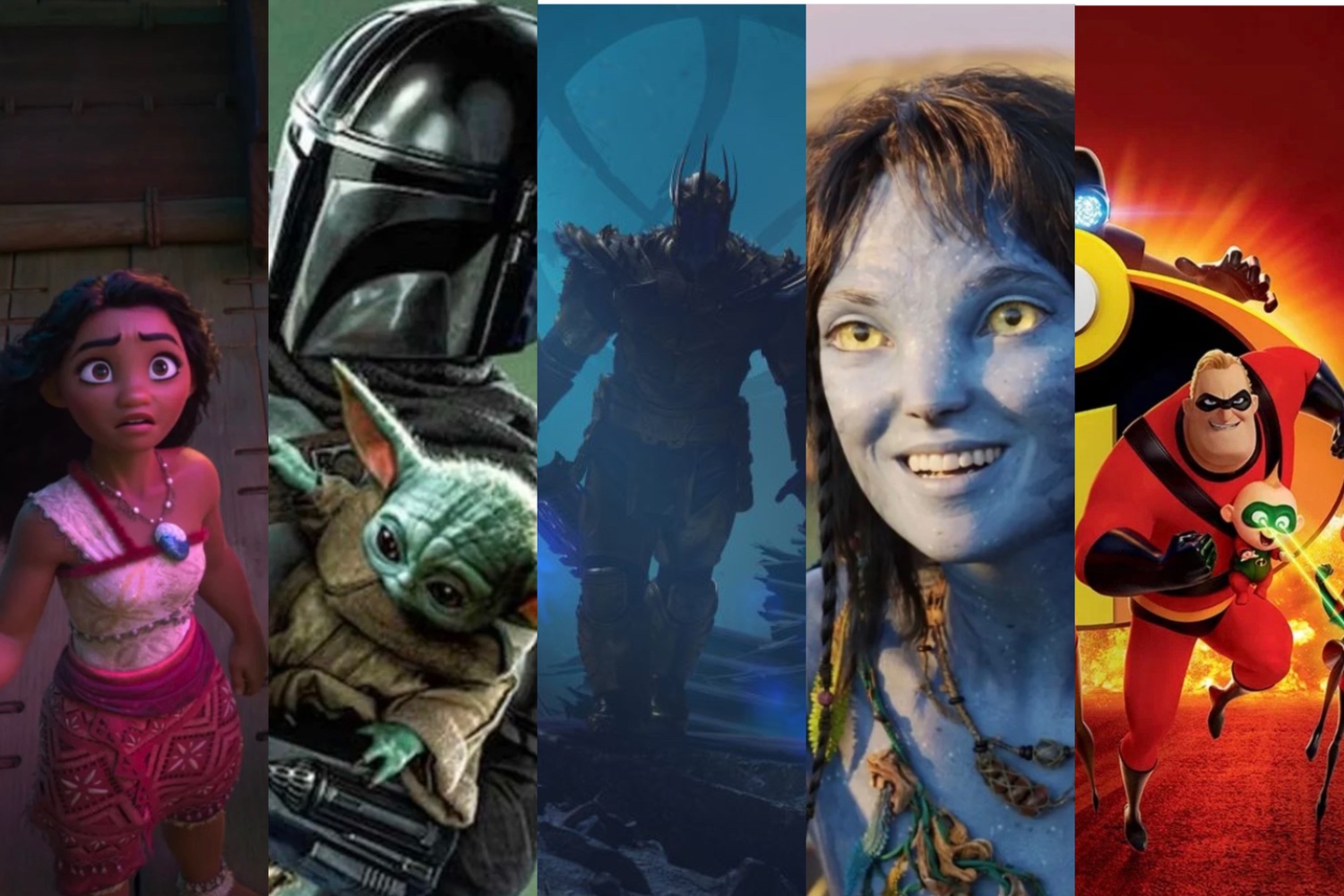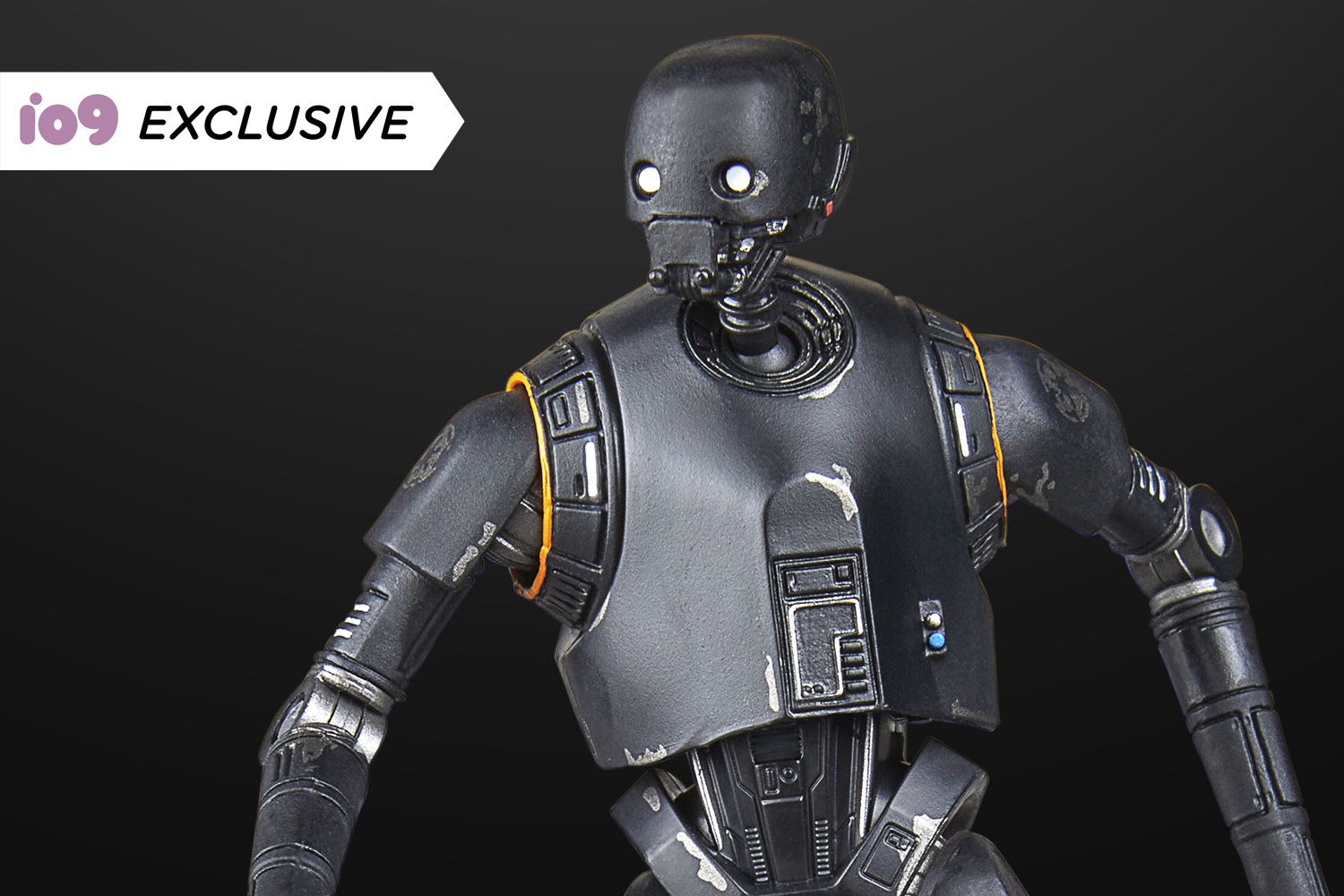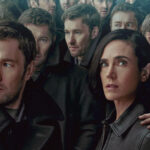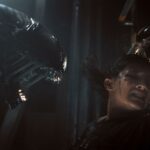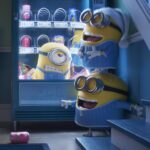A not-so-long time ago, in a galaxy pretty nearby, fans lined up to buy toys of Captain Phasma, Kylo Ren and other brand new characters from a movie they wouldn’t see for another three months. Only one franchise could harness that kind of blind power: Star Wars. And that’s because Star Wars and toys go together like Han Solo and the Millennium Falcon.
The Star Wars brand was built on its toys and merchandise. Younger fans may not remember the first time they saw The Empire Strikes Back, but they remember running around with an X-wing fighter in their hands. It was that nostalgia and passion which drove fans to line up in September to buy toys for the saga’s seventh and newest film, Star Wars: The Force Awakens. And that’s the multi-layered result of the franchise having literally changed the entire culture around movie merchandising, especially toys.
Before Star Wars, toy companies waited to see if a movie was a hit before releasing a bunch of toys. The most popular licensed toys were based on TV shows and comic books. Mickey Mouse and his Disney friends had been cashing in since the 1930s. Comic strips like Popeye were popular and television shows like Star Trek and Superman, did well too. G.I. Joe was big, along with Barbie , and lots of the toys people still know and love today. But very few were from movies and even fewer, if any, were from movies currently in theaters.
“The toy industry had just started being involved with Hollywood,” said Mark Bourdeaux, who has been working on Star Wars toys with Kenner and Hasbro since 1977. “I recall that the Six Million Dollar Man was a big hit for Kenner. It was a weekly show with a compelling premise. From there I think the licensing door forever swung wide open. Star Wars was going to be the runaway blockbuster that launched the toys and subsequent collecting into hyperspace.”
Which is easy to say now but in 1977, Star Wars was originally treated like almost every thing else. “There had never been a successfully licensed motion picture because in those days they waited to see how successful a movie was before even making the stuff,” said author Steve Sansweet, a former Lucasfilm employee and COO of Rancho Obi-Wan, a non-profit Star Wars museum housing the world’s largest Star Wars collection. In fact, several big companies—including Mattel and Mego, which had the DC and Marvel licenses—passed on Star Wars merchandise before Kenner got scooped it up.
“There really hadn’t been a sci-fi movie that had been so ‘toyetic,’” said Sansweet. “There were so many characters, vehicles and locations, that Bernie Loomis, CEO of Kenner thought, ‘No one’s going to remember the movie by the time this comes out but it’s so ‘toyetic,’ it should have a life of its own.’ Little did anyone know, including George Lucas, how successful it would be.”
Which is why 20th Century Fox allowed George Lucas to make what is now considered either one of the smartest, or dumbest, deals in Hollywood history. Depending on whom you ask. Lucas agreed to take a smaller salary on the first Star Wars as long as he could retain full rights to any possible sequels and merchandise. Fox, not looking at the big picture, agreed. They probably regretted it minutes into May 25, 1977.
That’s the day Star Wars hit theaters and demand for merchandise was almost instant. But there was almost nothing for people to buy. T-Shirts mainly. Kenner had officially signed the deal to make toys only a month before, but considering the time it takes to design, manufacture, package and distribute, they were many months away from releasing figures. There was insane demand and zero product.
As an attempt to curb demand, for the 1977 holiday season Kenner famously sold an empty box called the “Early Bird Certificate Page.” The box had no toys in it, just a few stickers and stuff along with a certificate kids could fill out and send in to be among the first to get Star Wars toys when they were released. It was a huge success. (Seen below in a repackage version from 2005.)
The toys finally hit shelves in early 1978. First with 12 figures and then many more. It’s also important to remember this wasn’t a time when could simply rewatch the movies on VHS or something. If you wanted to relive the movie, the easiest way was to buy the toys and do it yourself. That made Star Wars toys everything to fans at the beginning. Their full-time connection to the movies. The way you kept the love alive in your heart. “The 1970s and early Eighties, this was a special phenomenon,” said Vincent Zurzolo, a Star Wars specialist and COO of Metropolis Collectibles. “There was nothing else like this up to that point.”
That was true down to even the smallest detail. A 3.75 inch detail. One of the most crucial decisions in the history of Star Wars was Kenner and Lucasfilm’s decision to buck the trend of the time and make the Star Wars action figures a smaller size than the majority of other figures of the era.
“They could have gone 7 [inch], they could have gone 12, but the fact they held it to [3.75 inch meant that] they were able to produce the vehicles not only to fit on the shelves but at a price point people could afford. That was certainly key to everything” said Sansweet. Though Star Wars wasn’t the first 3.75 inch figure, its success basically made that size the standard going forward. G.I. Joe, for example, was originally a 12 inch figure. By the early Eighties, these figures were 3.75 inches tall instead.
“The figures would be large enough to sculpt the personalities required – but were small enough to allow us to create the ‘kid-friendly’ vehicle world,” Brodeaux said. Basically 3.75 was the smallest size Kenner could make each figure so they looked different, could go into different ships, and be affordable enough to buy a bunch of them. It was the perfect compromise.
By March of 1979, with development well underway on the second film, Star Wars toys had grossed over $200 million. And that’s when things changed even more significantly.
“We started designing in advance with Kenner so the release of the toys would coincide with the release of the movie” Charlie Weber, former CEO of Lucasfilm said in “The Making of The Empire Strikes Back.” “Up until then, there was always like a year delay.”
Bourdeaux explained that very early on in the process Kenner would get 8x10s photographs from Lucasfilm of set photography, concept art, costumes and more to help them get the ball rolling. “I remember the relationship between Kenner and Lucasfilm to be strong,” he said. “The channel of communication was always open and the information flowed back and forth.”
To start, Kenner would first figure out what the “core elements and key story beats” were. Those would hit shelves first when the movie was released. From there, since there were several years between films, conversations would then turn to “what’s next?” What secondary and tertiary characters were cool, fan favorites and necessary to recreate some of your favorite scenes? Those would be released after.
“The teams at Kenner and Lucasfilm worked closely during the development cycle,” Bourdeaux said. “Meetings would include business and toy plan discussions for that year’s line proposals. They would help us understand the key elements of the story—which was critical to the success of the toys. Everyone’s goal was to produce the best product for any given year.”
And, in a twist that surely almost no one saw, the merchandise from the movies began to help fund the development of Lucasfilm itself. “Kenner toys and the other licensees were going GREAT in 1979,” former senior vice president of Lucasfilm Sid Ganis said in “The Making of The Empire Strikes Back.” “There were big plans for continued licensing, which was an enormous part of the company, very important. George said out loud that it was the reason he was able to create plans to build the Ranch and to fund ILM and so on.”
That kind of success does not go unnoticed and it set the tone for everything that followed. These days, licenses are in place well before a movie hits theaters. It’s a given that movie merchandise will be on shelves on opening weekend and that your favorite soda will be plastered with Marvel or DC characters. But that all happened because of Star Wars.
In fact, the success of the Star Wars toys inspired other toy companies not only to produce smaller toys and vehicles, they created entertainment franchises based on toys too. G.I. Joe, He-Man and Transformers all started as toys and then became iconic pieces of television or film.
Which is why, popular myth might have you believe some of the later Star Wars movies began to create characters and vehicles only because they could be turned into toys. The best example being the seemingly random introduction of the toy-friendly, teddy-bear looking Ewoks in Return of the Jedi.
“A lot of people say the films are just an excuse for merchandising,” George Lucas said in “The Making of Return of the Jedi.” “‘Lucas decided to cash in on the teddy bear.’ Well it’s not a great thing to cash in on, because there are lots of teddy bears marketed—so you don’t have anything that’s unique. If I were designing something original as a market item, I could do a lot better. Again, people tend to look at merchandising as an evil thing, but ultimately a lot of fun things come out of it and at the same time it pays for the overhead of the company of everybody’s salary.”
That’s from the creator himself—but, even so, some fans and experts have different takes.
“My feeling is the [first] movie dictated the toys. That’s what I believe,” said Zurzolo. “But after they saw how popular the toys were, I’m sure that had an influence in Lucas’ mind to make creatures and characters for follow up movies that could be made into toys. And I definitely believe in the original script, the Ewoks were supposed to be Wookiees. But they wanted them to be more loveable and cute and able to market them as a toy line, so they made them Ewoks to market to younger kids.”
“Bullshit,” responds Sansweet. “George wrote the movies and came up with the stories he wanted to. And if there are people out there who say ‘Oh George made the Ewoks so he could produce teddy bears,’ that’s a load of malarkey. The Ewoks were there because at one point he wanted an entire Wookiee planet but he’s already established that Chewbacca was mechanically savvy and he wanted primitive people, plus he always loved working with little people. So they became the Ewoks. They became the primitives who overtook the highly mechanized Empire. It was not about selling toys, they were selling plenty of toys.”
According to Sansweet, from 1978 through 1986—which is how long toys based on the original Star Wars trilogy were produced—Kenner sold a quarter of a billion action figures worldwide.
Bourdeaux was at Kenner all that time. He started before Star Wars toys were released and still is there working on Star Wars. Currently, he’s the Senior Principal Designer of Star Wars toys at Hasbro and says that while some latitude was given, “the majority of the time the toys were directly taken from what we saw on screen—that was what drove the fantasy”
Plus if Lucasfilm was focusing on making characters only for toys, they did a very poor job. In the eight years that toys were released for the original trilogy, they made figures of 115 different characters, according to Sansweet. In the years since, 1995 to today, they’ve done over 2400 different characters.
Lots of that is because of the Expanded Universe, prequels and now The Force Awakens. There is more Star Wars to mine than that ever was before. But it’s also because the Internet changed everything.
“The collecting hobby really started in the early ‘90s with the growth of the internet,” Sansweet said. “It enabled people to see what was out there, what could be purchased, [and] what they could miss, and it went from there. Now we’re in the third generation of parents passing down to their kids who pass down to their kids.”
That even goes for the people currently making Star Wars. “My friend’s kids now, they haven’t seen the movies but they are somehow so aware of everything that happens,” said Adam Driver, the actor who plays Kylo Ren in The Force Awakens. “And that’s how I was introduced to them, through the merchandising, toys and Stormtrooper helmets. Things like that.”
That story, of getting into the movies by way of the toys, has become common among not only Star Wars fans, but non-fans too. Everyone has owned, or played with, a Star Wars toy. Yet even when the toys seem to supersede the films, the people behind the scenes still hold true to Lucas’ original sentiment. The story rules.
“What’s been incredible for me has been the creative freedom and the desire to make something hopefully worth people’s time – and not a commercial for toys,” J.J. Abrams told Rolling Stone. “I’m not itching to be involved in creating things that end up in a landfill. I wanted to tell a story.”
Sometimes though, the best stories were the ones you told in the backyard with a bunch of Star Wars toys. “They cemented you into the universe,” said Zurzolo. “It becomes a part of you and you a part of it so when the next movie comes out, you have to see it.”
You can’t always be watching Star Wars movies. But you can always dive into those memories via the merchandise. And it’s a big part, maybe the biggest, of why Star Wars is still as popular as ever.
Image Credit: Top to Botton, Image by Jeff Cooke, Jeff Noble/Flickr, Bill Pugliano/Getty Images, George Best/Getty Images, Lucasfilm Ltd., Bill Pugliano/Getty Images, Michael Loccisano/Getty Images for Toys’R’Us
Contact the author at [email protected].
